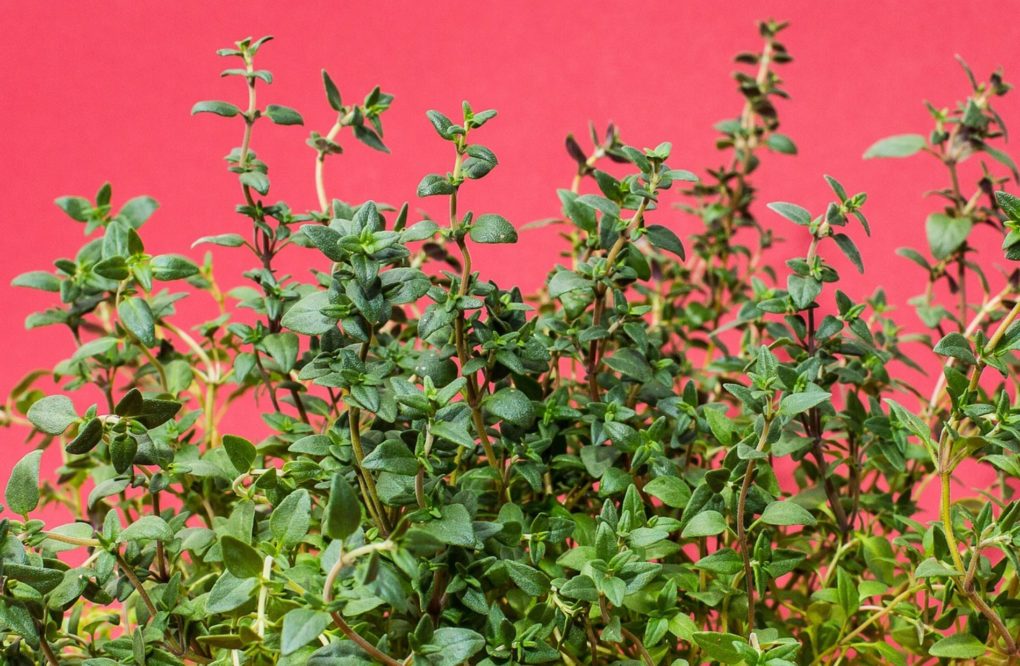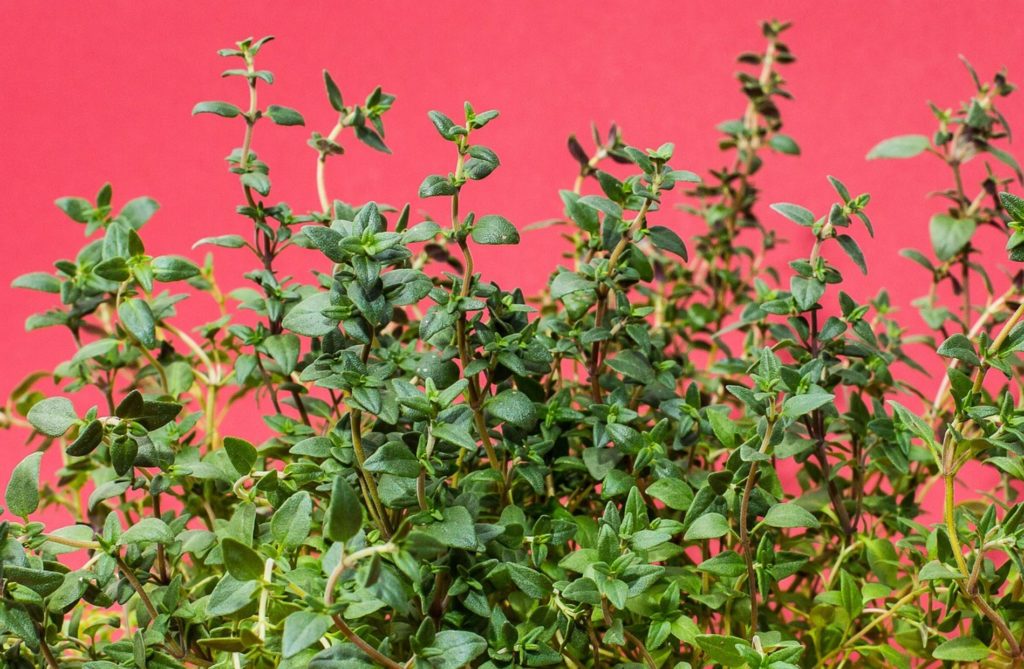6 Ways To Make the Most of the Medicinal Benefits of Fresh Thyme
No doubt that many of you are looking for more natural ways to care for health ailments and, interestingly, you may not have to venture very far to find it. Thyme, that unassuming herb that quietly meanders through the garden has been widely acknowledged as one of the most used herbs since as far back as ancient Egypt.
Medical uses of thyme include:
a powerful antioxidant, anti-inflammatory, local anesthetic, antinociceptive, cicatrizing, antiseptic, antibacterial, antifungal, antiviral, good for cardiovascular system health
Widget not in any sidebars
Thyme sets itself apart from other herbs by its abundance of medicinal properties. Its main bioactive ingredients responsible for thyme’s many medicinal uses is Thymol and Carvacrol.
- According to Medical News Today, “thymol is one of a naturally occurring class of compounds known as biocides. These are substances that can destroy harmful organisms, such as infectious bacteria.
- Carvacrol is another biocide that assists thyme in healing the body. Carvacrol inhibits bacteria growth which makes it ideal for natural wound care and is also an excellent natural tranquilizer and has a tonic effect on the entire nervous system. When used alongside other biocides, such as carvacrol, thyme has strong antimicrobial properties.
According to The National Center for Biotechnology Information, fresh herbs, like thyme all, have antiviral properties, and incorporating them into your diet on a regular basis can significantly help to reduce the viral load in the body of those with immunodeficiency disorders. Here are 10 antiviral foods you can read about.
More notably, this little herb could also play a role in diabetes management. Researchers have investigated its role in managing diabetes and results have suggested that it may help manage blood sugar levels. As well, it is a good source of pyridoxine which is known to play an important role in manufacturing GABA levels in the brain, aid in regulating sleep patterns, and benefit neurotransmitter function in the brain. GABA is also one of the best natural defenses against stress damage.
6 Ways To Make the Most of Fresh Thyme
Thyme could be one of the most universal herbs to have for culinary and for medicinal uses. Here are 6 ways to make the most of this unassuming herb.
- Thyme cough syrup – If you feel a cold coming on, thyme can help get you back in good health. Thyme is a fantastic medicinal herb and can easily be made into a natural immune-boosting cough remedy. A benefit to making homemade thyme elixirs is that thyme is packed with vitamin C and is also a good source of vitamin A. Making a thyme cough elixir is easy! Here’s a great recipe to start with.
- Thyme tea – Make thyme tea is as simple as adding a few springs to some hot water and letting to steep for 10-12 minutes. As well, fresh thyme can be added to herbal steams or for compresses for any respiratory infection, either bacterial or viral, or can be added to bathwater when you feel sick, to benefit from the steam, and soothe the entire body. Drinking herbal thyme tea has been shown to have a wide array of health benefits. According to Medical Medium, “Thyme tea also helps stimulate memory, ease headaches and muscle tension, soothe coughs, relieve fevers, and fight colds and infections. Thyme tea is a great purifying herb for the digestive tract and has been found to destroy certain intestinal hookworms and roundworms and aid in the digestion of rich or fatty foods. Thyme is also essential for urinary tract health and can help prevent infections and keep healthy bacteria in balance.”
- Natural skincare – The essential nutrients found in this herb help maintain skin texture and eliminate bacteria causing many skin disorders. Therefore, this is great for acne-prone skin. As well, thanks to its antiseptic and antifungal properties, it is a common ingredient in mouthwash. Here’s a recipe for natural mouthwash using thyme. As well, thyme is also a popular ingredient in natural deodorants thanks to its antibacterial properties. And if you have a yard full of mosquitoes, this small herb also plays double duty as a natural bug repellent. In order to get the best pest-fighting results, rub thyme leaves between your hands to release the essential oil. You can also make homemade repellant by mixing four drops of thyme oil to every teaspoon of olive oil or mixing five drops for every 2 ounces of water.
- Herbal poultice – If you are experiencing a skin condition (bacterial, fungal, or skin irritation) try using a thyme herbal poultice to help draw out the infection and soothe the skin. To make a thyme poultice, mix together enough dried thyme and water to make a thick paste. Layout your chosen cloth on a flat surface. Spread the preparation onto the cloth. Make sure the cloth is the right size for the wound area you need to cover and be sure that the preparation covers the entire cloth. Apply the prepared poultice to the affected area. Wrap a towel, plastic wrap, or bandage around the poultice. Secure the wrap, as necessary. This will keep the poultice on and keep it from staining sheets and other surfaces. (Source) Note: You may also develop contact dermatitis when using herbal poultices that contain thyme. To learn more about poultices, click here.
- Salves – Salves and balms can be made to utilize thyme’s astringent, antifungal, antibacterial properties. All you will need is thyme essential oil, beeswax, and a carrier oil like olive oil. Find a cute container or re-use an Altoids tin, find a salve or balm recipe you want to make, and try it out.
- Cleaning supplies – Thanks to thyme’s excellent antimicrobial properties, this herb is the perfect addition to herbal cleaning products. Here’s an easy thyme cleaning product you can use to cut down on chemical sprays in the house. Use this all-purpose cleaner to naturally disinfect surfaces, floors, and bathrooms.
See: The Lost Book of Remedies
Lemon Thyme Herbal Cleaner
- Thyme
- Lemon peels/citrus oil
- White vinegar
Peel and slice peels into thin strips and add to a large glass jar along with a handful of fresh thyme (crush the leaves between your fingers first a bit to release the oils). Pour in the vinegar and fill the jar, leaving 1/2″ headroom. Set the jar on the kitchen counter to ‘age’ for about a month, shaking the contents every few days to mix them up. After a month, strain it into a spray bottle for use.
Note: Pregnant women should not consume thyme as well, as it has shown to exhibit abortifacient activity. Safety for breastfeeding women is not established, as there’s currently no scientific evidence regarding this area. For a list of side effects and guidance on safety when using thyme, click here.
What makes this herb so ideal is that it is low maintenance and will continue growing for years to come. We have lots of lemon thyme growing in different parts of our property and I never have to worry that it won’t thrive. Try playing around with this herb’s uses to keep your family happy and healthy!
Related:
- 20 Herbs I Have Growing in My Medicinal Garden
- The Many Ways Lavender Is A Must For Natural Health
- The Healing Powers of Aloe Vera
- Why You Should Consider Growing Peppermint This Summer
This article was originally published at Ready Nutrition™ on August 12th, 2020
Image: Pixabay




